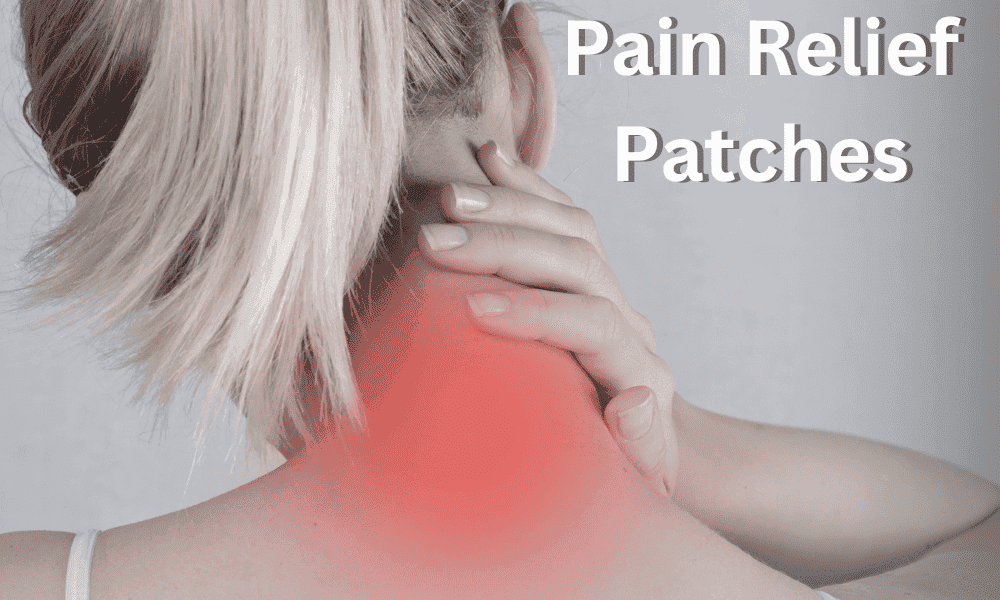Your All-in-One Solution for Chronic Pain Management
Get a comprehensive understanding of pain relief patches: what they are, how they work, their benefits, side effects, and alternatives. Discover this unique approach to pain management that could change your life!
Follow our Pain Diaries Youtube channel to get more cutting edge pain relief information, click now to sunscribe

KEY TAKEAWAYS
– Pain Relief Patches Defined: Patches applied to the skin that deliver medication directly to the area of pain.
– How They Work: Medication is absorbed through the skin via transdermal pain patch delivery, offering a steady dose to the targeted area.
– Types of Patches: Available in both prescription and over-the-counter formats, with active ingredients ranging from opioids and NSAIDs to lidocaine and capsaicin.
– Benefits: A pain patch provides direct, targeted relief with a controlled release of medication, reducing the likelihood of systemic side effects.
– Potential Side Effects: Can include skin irritation and, in rare cases, more serious drug reactions.
– Alternatives: Oral medications and physical therapy are viable alternatives for those who cannot use patches.
– FAQs Addressed: Effectiveness, variety, mechanism, usage frequency, suitability for sensitive skin, and safety during pregnancy.
– Consult Healthcare Professionals: Important to speak with a healthcare provider before starting any new pain relief regimen.
Introduction
The journey towards pain relief can often seem like a long and winding road, filled with unexpected turns and bumps. Yet, with the advent of pain relief patches, there is a straightforward and effective way to relieve pain.
This article explores the effective solution of pain relieving patches, a unique, non-invasive method of alleviating chronic pain.
Understanding Pain Relief Patches
What are Pain Relief Patches?
Pain relief patches, as their name implies, are adhesive patches applied to the skin to deliver pain-relieving medication directly to the source of discomfort.
They represent a significant advancement in the field of pain management and are a boon for those dealing with chronic pain conditions.
The Science Behind Pain Relief Patches
Pain relief patches work by delivering a steady stream of medication to the targeted area through the skin, also known as transdermal delivery.
This method allows for a steady absorption of the drug, helping to maintain a consistent level of relief over a prolonged period.
Types of Pain Relief Patches
Pain relief patches can be categorized broadly into two types: prescription patches and over-the-counter (OTC) patches.
Prescription pain relief patches often contain stronger medications, like opioids or nonsteroidal anti-inflammatory drugs (NSAIDs), which can be used for a variety of pain conditions, including severe nerve pain.
OTC patches, on the other hand, typically contain milder pain relievers like lidocaine or capsaicin, which are particularly beneficial for localized areas of discomfort such as minor muscle aches, knee pain, or managing nerve pain.
The Advantages of Pain Relief Patches
Direct and Targeted Relief
The main advantage of pain relief patches is their ability to provide targeted relief. Instead of circulating medication throughout the body, these patches deliver pain relief directly to the area that needs it most.
Controlled Drug Release
Another significant benefit of pain relief patches is their ability to control the release of medication. This slow, steady release can help prevent spikes and crashes in pain relief levels, resulting in consistent, long-lasting relief.
Minimized Systemic Side Effects
Because pain relief patches deliver medication directly to the site of pain, they reduce the amount of drug circulating systemically in the body. This can minimize side effects typically associated with oral medications.
Potential Side Effects of Pain Relief Patches
While pain relief patches have numerous benefits, like any other medication, they are not without potential side effects.
These may range from skin irritation to, in rare cases, serious reactions to the drug delivered by the patch.
Common Side Effects
The most common side effect of pain relief patches is skin irritation. This can include redness, itching, or mild swelling at the application site.
Serious Side Effects
While rare, serious side effects can occur with pain relief patches, especially those containing potent prescription drugs. These can include dizziness, difficulty breathing, or rapid heart rate.
Alternatives to Pain Relief Patches
If pain relief patches are not for you, fret not. There are plenty of other methods available for pain management.
Oral Pain Medications
Oral pain medications, like NSAIDs and opioids, are a traditional approach to pain management. While they lack the targeted relief provided by patches, they can still be quite effective.
Physical Therapy
Physical therapy can also be a fantastic way to manage pain. It focuses on strengthening the body and improving flexibility, which can help to alleviate discomfort over time.

Frequently Asked Questions about Pain Relief Patches
- What is the most effective pain relief patch?
The effectiveness of a pain relief patch depends largely on the type of pain you’re experiencing and the ingredients in the patch. Prescription patches with stronger medications like opioids or NSAIDs often provide more potent relief for severe pain. For milder discomfort or specific conditions like nerve pain, OTC patches with lidocaine or capsaicin can be highly effective. It’s always best to consult a healthcare professional to determine which pain patch is most suitable for your needs.
- What kind of patches are there for pain?
There are several types of pain relief patches available, which can be broadly categorized into prescription and over-the-counter (OTC) patches. Prescription patches often contain powerful drugs such as opioids or nonsteroidal anti-inflammatory drugs (NSAIDs). OTC patches typically contain milder pain relievers, like lidocaine or capsaicin, which can help with conditions such as nerve pain or minor muscle discomfort.
- Do muscle pain patches work?
Yes, muscle pain patches can work effectively for muscle discomfort, strains, and sprains. They can provide targeted relief to the affected muscle, helping to reduce pain and inflammation. However, their effectiveness may vary depending on the severity of your pain, the specific product used, and individual factors such as your skin type and sensitivity.
- How does the pain relief patch work?
Pain relief patches work by delivering medication directly to the source of discomfort through the skin, a method known as transdermal delivery. When you apply the patch, the medication is absorbed through the skin and into the affected area, providing targeted pain relief. This direct approach allows for a steady release of the drug, maintaining consistent relief levels over a prolonged period.
- How often should I use a pain relief patch?
The frequency of use largely depends on the type of pain relief patch and your specific pain condition. It’s crucial to follow the instructions provided on the product packaging, or as directed by a healthcare professional. Some patches are designed for extended wear and can provide relief for up to 12 hours, while others might need to be replaced more frequently.
- Can I use a pain relief patch if I have sensitive skin?
Many pain relief patches are designed to be gentle on the skin, but some people with particularly sensitive skin might experience irritation. If you have sensitive skin, it’s advisable to test a small patch first to see how your skin reacts. If you notice any signs of redness, itching, or swelling, discontinue use and consult a healthcare provider.
- Are pain relief patches safe for pregnant women?
Pregnancy can often come with its own set of discomforts, and while pain relief patches might seem like an easy solution, it’s crucial for pregnant women to consult with a healthcare professional before using any new medication. Certain ingredients in pain patches may not be recommended during pregnancy. Always check with your doctor to ensure the safety of both mother and baby.
Conclusion
In the vast realm of pain management, pain relief patches stand out for their targeted and controlled relief with minimal systemic side effects. They could be the missing piece in your journey towards a pain-free life.
Remember, while this guide provides a comprehensive overview, always consult with a healthcare professional before beginning any new treatment.
Performance Pain and Sports Medicine has prescription Lidocaine Patches available via telemedicine, so visit our online store now.
Dr. Suzanne Manzi is available for in person consultations at the Houston or League City locations in Texas. Dr. Matthias Wiederholz is available for in person visits in Houston, TX and Lawrenceville, NJ. Contact us now to learn more.
Visit our pain relief patch web page today and embark on a path towards a pain-free future.

















